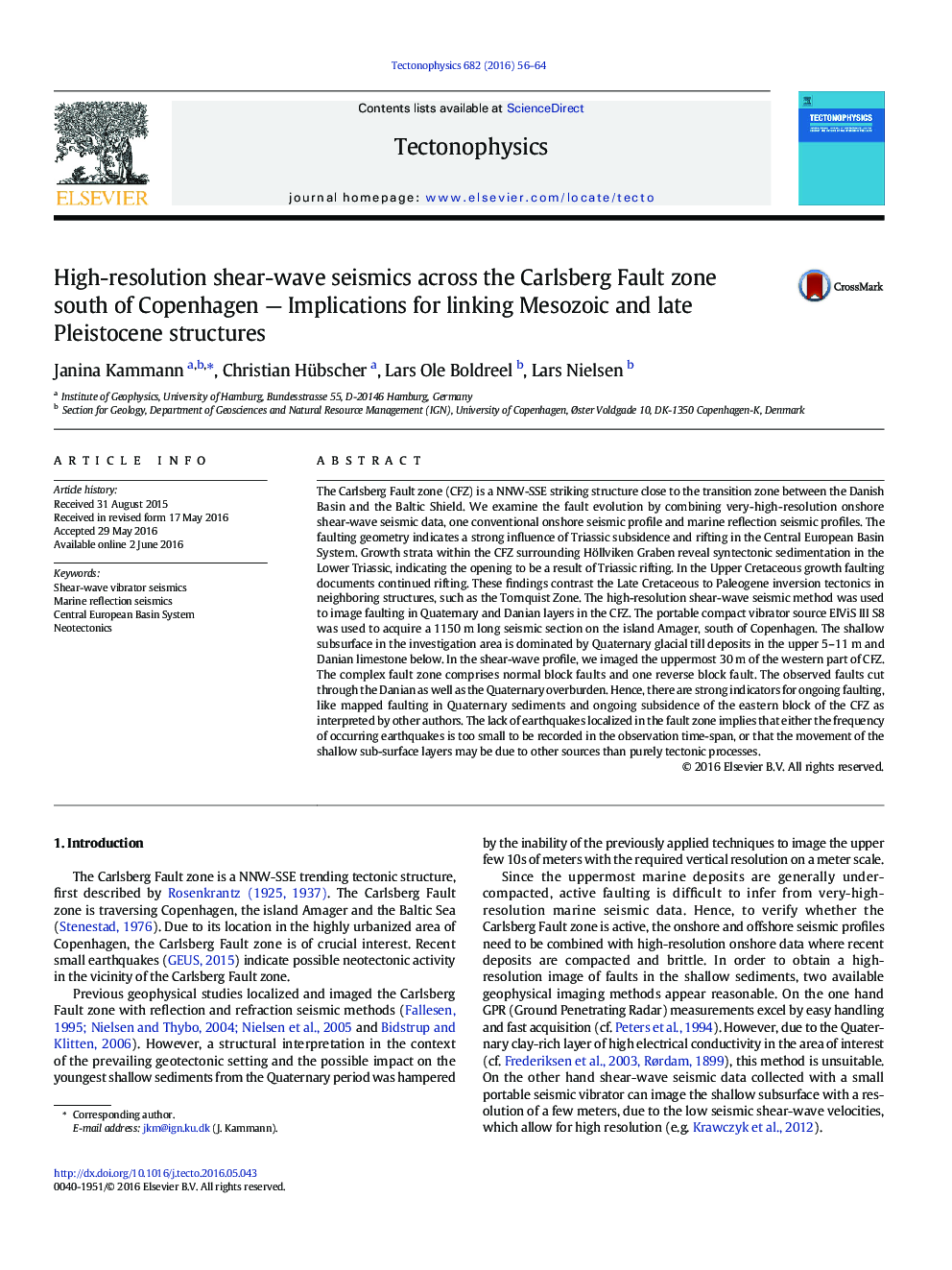| کد مقاله | کد نشریه | سال انتشار | مقاله انگلیسی | نسخه تمام متن |
|---|---|---|---|---|
| 4691303 | 1636716 | 2016 | 9 صفحه PDF | دانلود رایگان |

• The evolution of the CFZ was strongly influenced by Triassic subsidence and rifting
• Contrary to nearby inverted structures, continued Late Cretaceous rifting was mapped
• The shear-wave profile images faults cutting through Danian and Quaternary overburden
• Despite the lack of earthquakes strong indicators for ongoing faulting were identified
• Combined methods allow the linking of shallow and deep structures
The Carlsberg Fault zone (CFZ) is a NNW-SSE striking structure close to the transition zone between the Danish Basin and the Baltic Shield. We examine the fault evolution by combining very-high-resolution onshore shear-wave seismic data, one conventional onshore seismic profile and marine reflection seismic profiles. The faulting geometry indicates a strong influence of Triassic subsidence and rifting in the Central European Basin System. Growth strata within the CFZ surrounding Höllviken Graben reveal syntectonic sedimentation in the Lower Triassic, indicating the opening to be a result of Triassic rifting. In the Upper Cretaceous growth faulting documents continued rifting. These findings contrast the Late Cretaceous to Paleogene inversion tectonics in neighboring structures, such as the Tornquist Zone. The high-resolution shear-wave seismic method was used to image faulting in Quaternary and Danian layers in the CFZ. The portable compact vibrator source ElViS III S8 was used to acquire a 1150 m long seismic section on the island Amager, south of Copenhagen. The shallow subsurface in the investigation area is dominated by Quaternary glacial till deposits in the upper 5–11 m and Danian limestone below. In the shear-wave profile, we imaged the uppermost 30 m of the western part of CFZ. The complex fault zone comprises normal block faults and one reverse block fault. The observed faults cut through the Danian as well as the Quaternary overburden. Hence, there are strong indicators for ongoing faulting, like mapped faulting in Quaternary sediments and ongoing subsidence of the eastern block of the CFZ as interpreted by other authors. The lack of earthquakes localized in the fault zone implies that either the frequency of occurring earthquakes is too small to be recorded in the observation time-span, or that the movement of the shallow sub-surface layers may be due to other sources than purely tectonic processes.
Journal: Tectonophysics - Volume 682, 6 July 2016, Pages 56–64